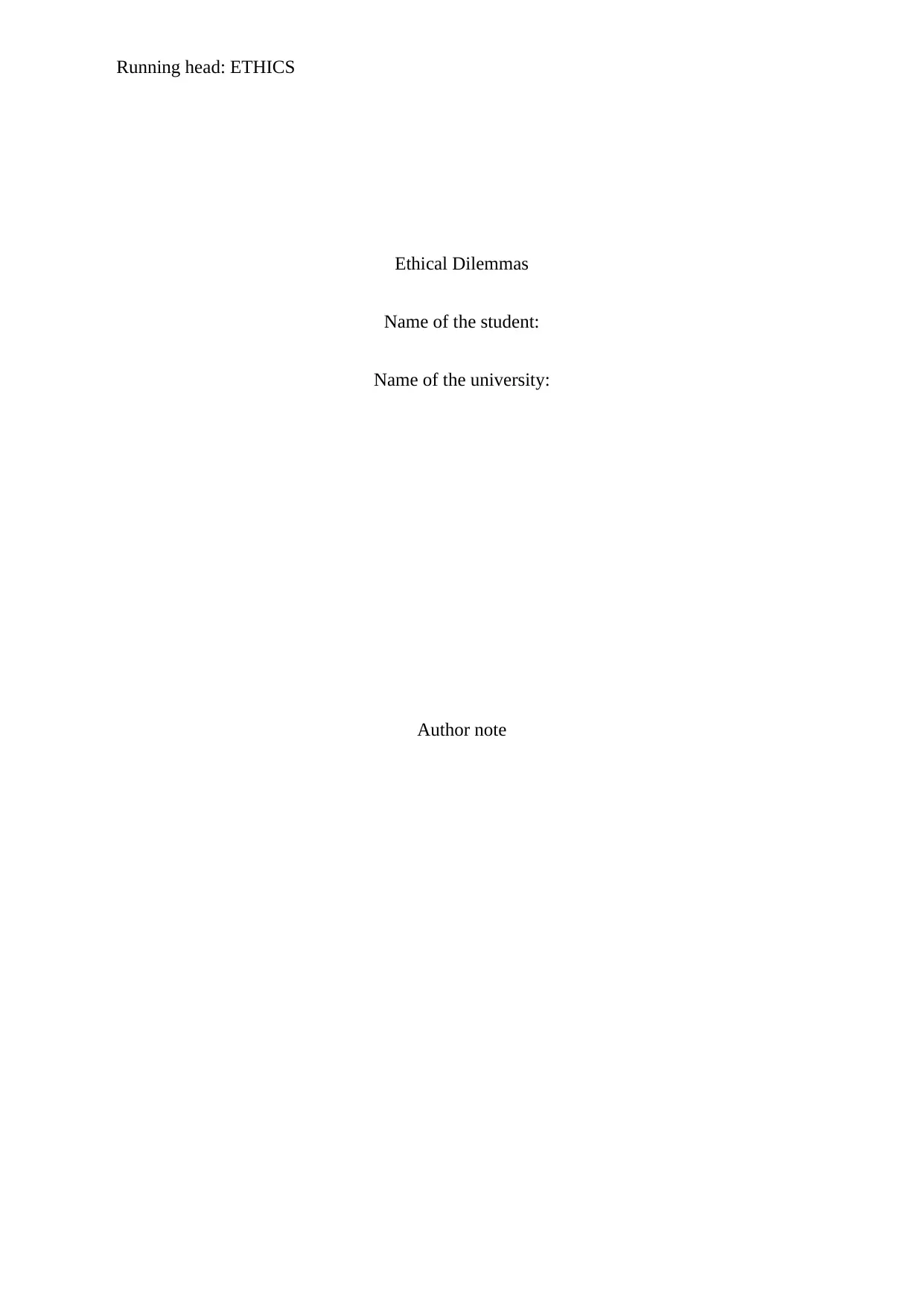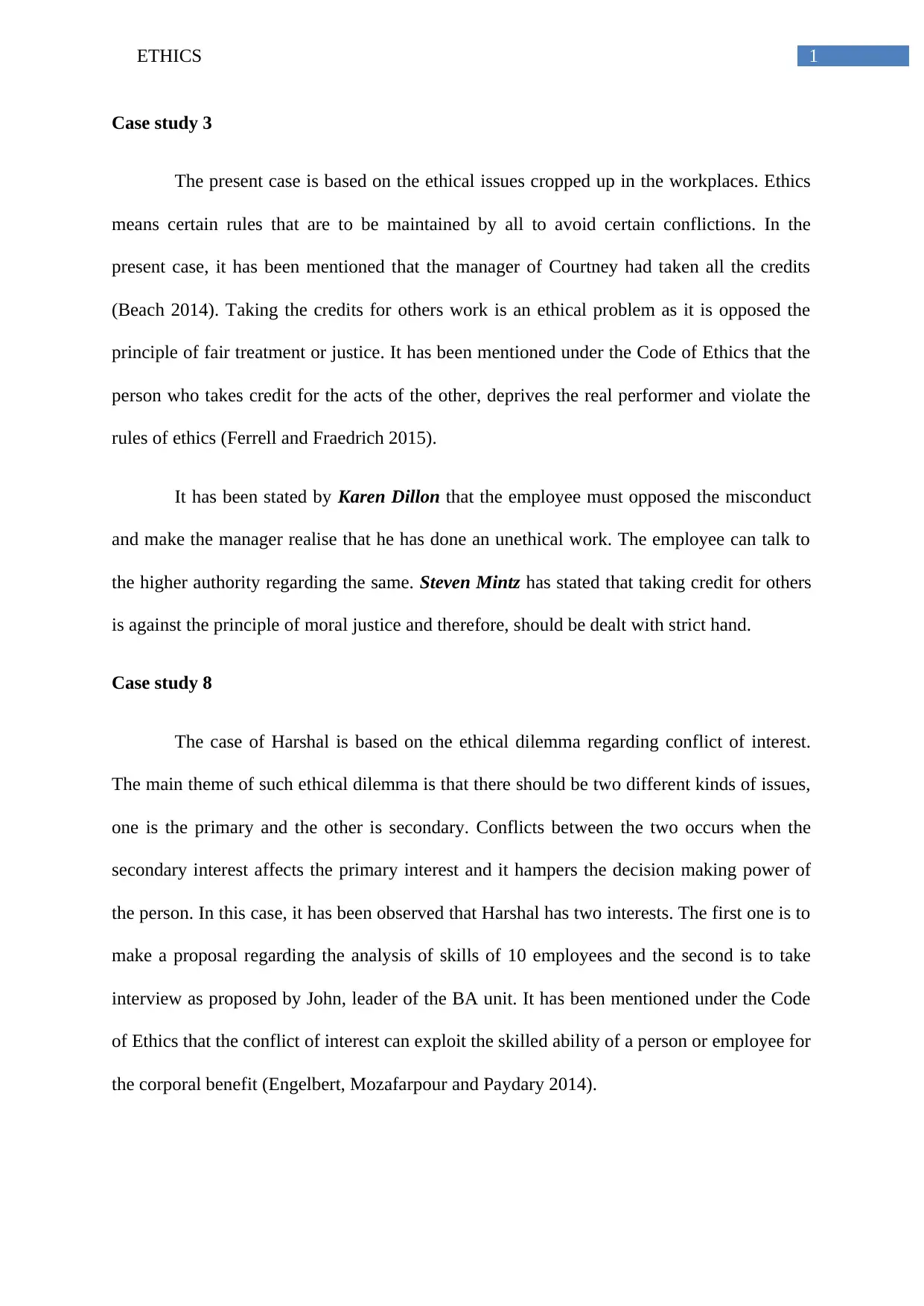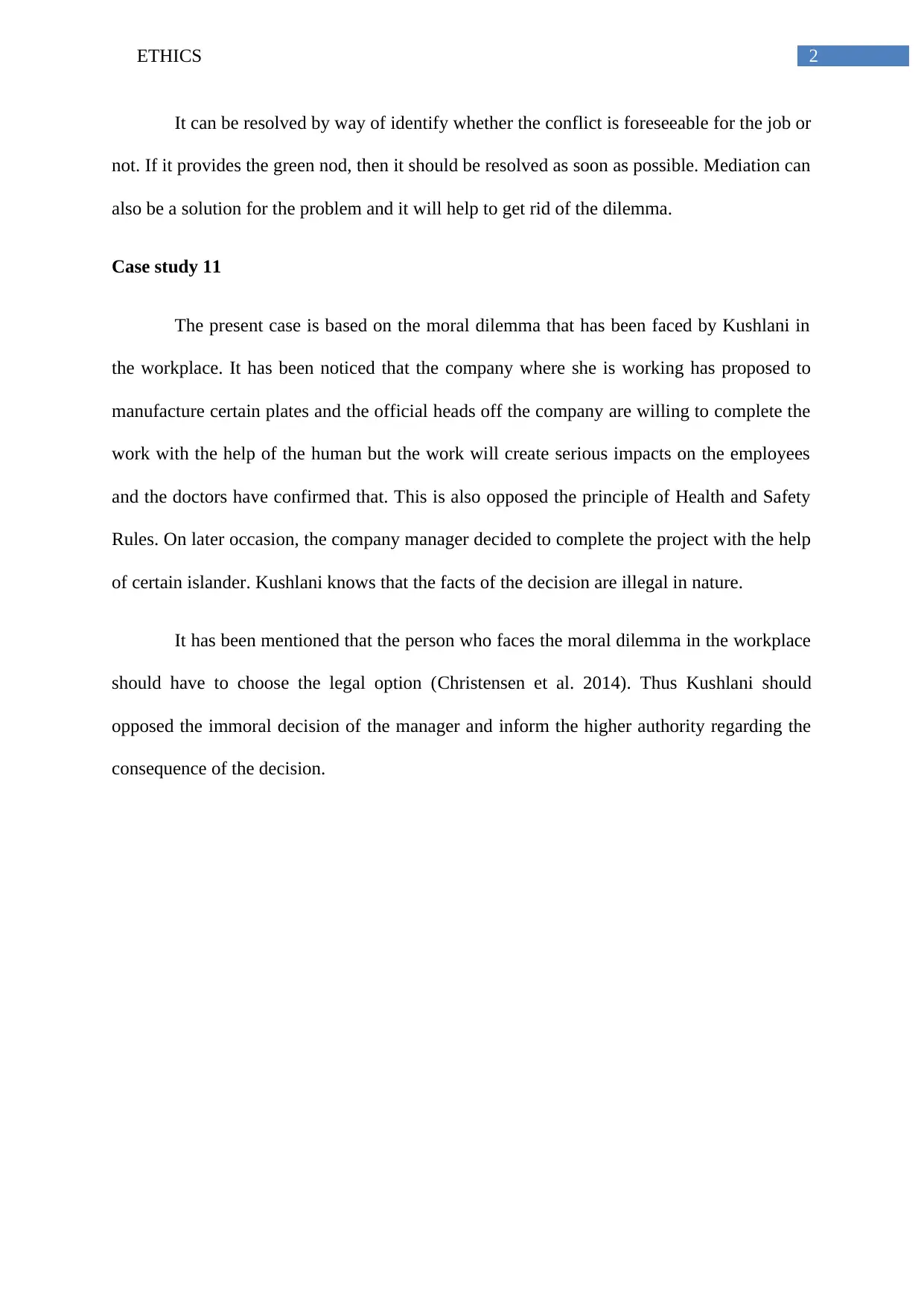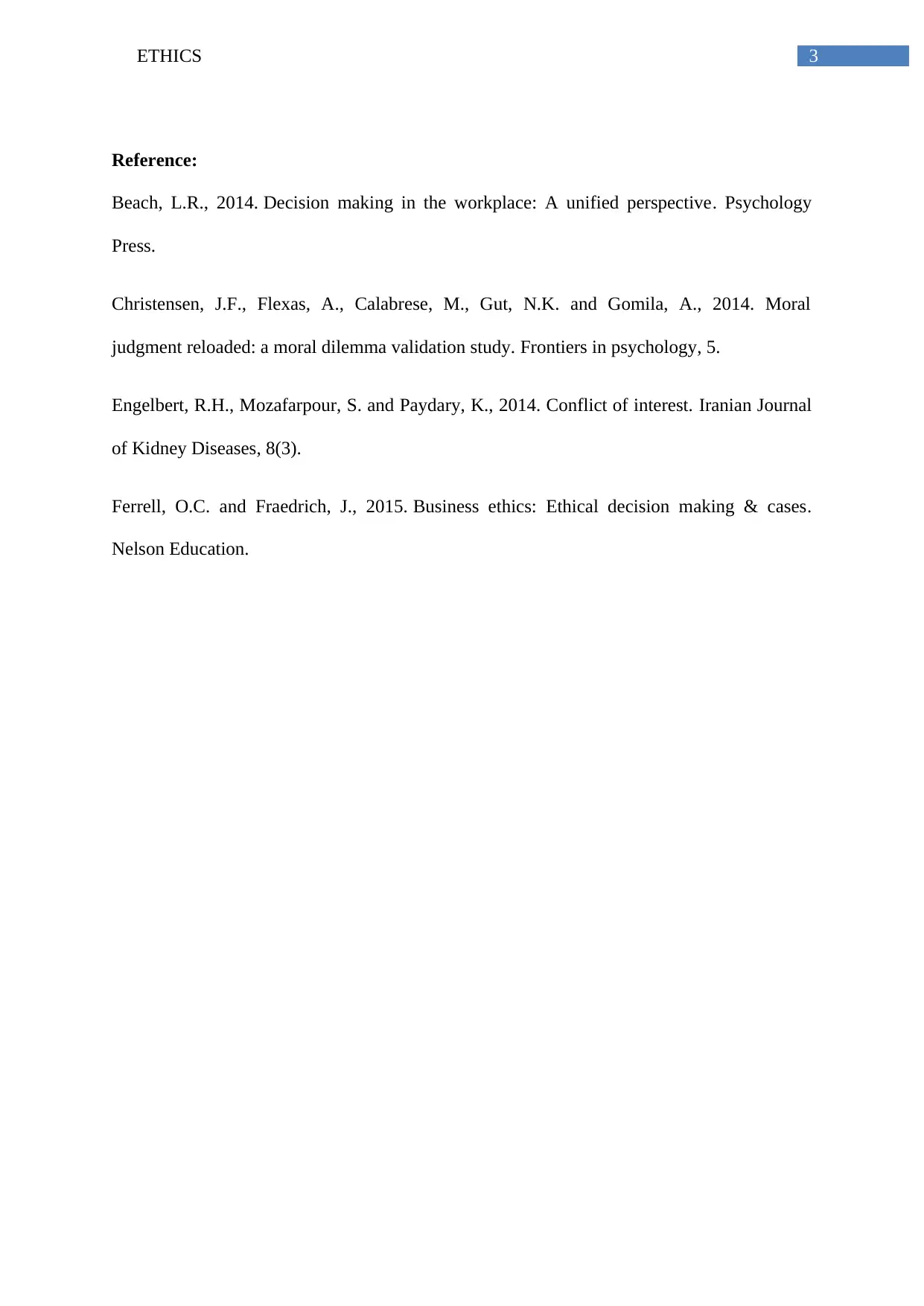University Ethics Course: Case Study Analysis of Workplace Dilemmas
VerifiedAdded on 2020/04/29
|4
|697
|91
Case Study
AI Summary
This assignment analyzes three case studies focusing on ethical dilemmas in the workplace. The first case examines the ethical issue of a manager taking credit for an employee's work, violating principles of fair treatment. The second case explores a conflict of interest scenario where an employee's secondary interest impacts their primary responsibilities, potentially exploiting their skills for corporate benefit. The final case presents a moral dilemma where an employee must choose between following company directives that could harm workers' health and safety or opposing the company's unethical decision. The analysis references ethical codes and provides suggestions for resolving these dilemmas, such as speaking to higher authorities or seeking mediation.
1 out of 4











![[object Object]](/_next/static/media/star-bottom.7253800d.svg)